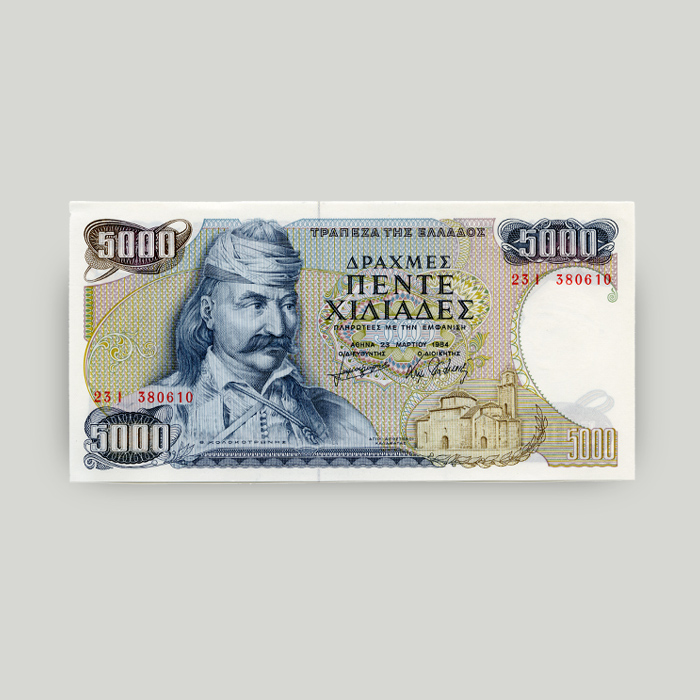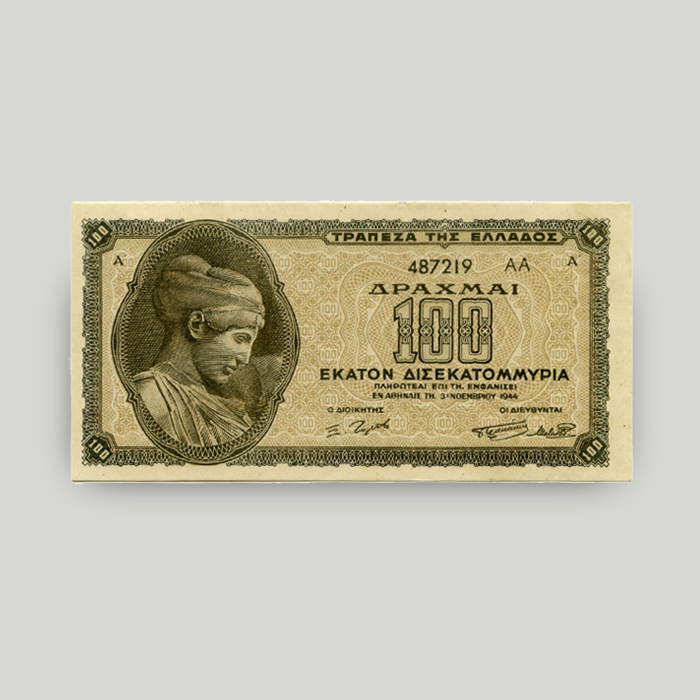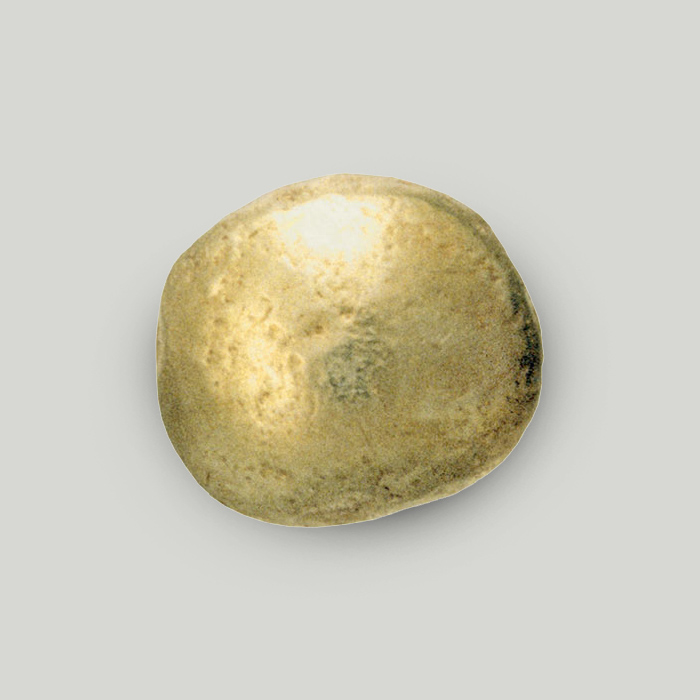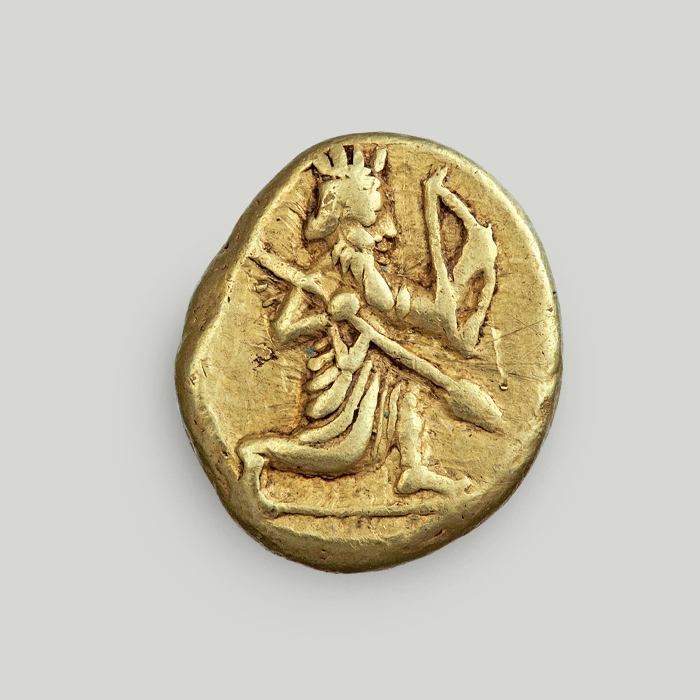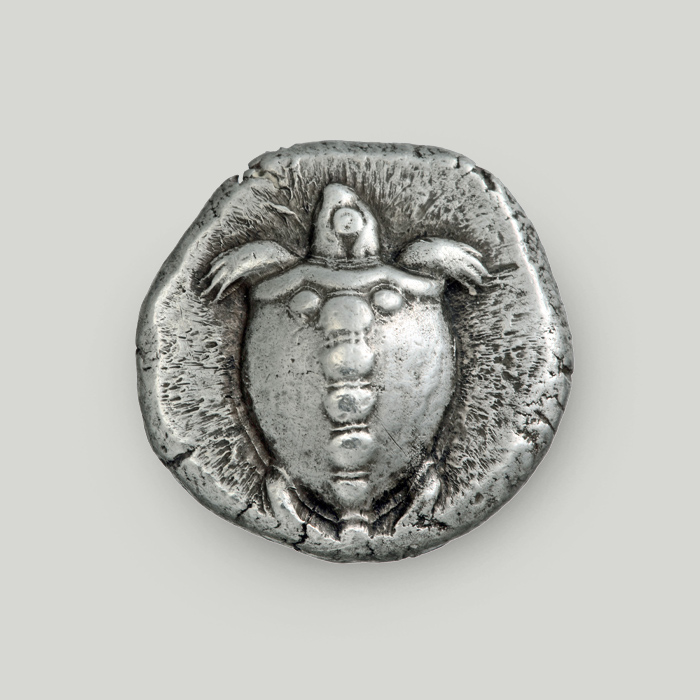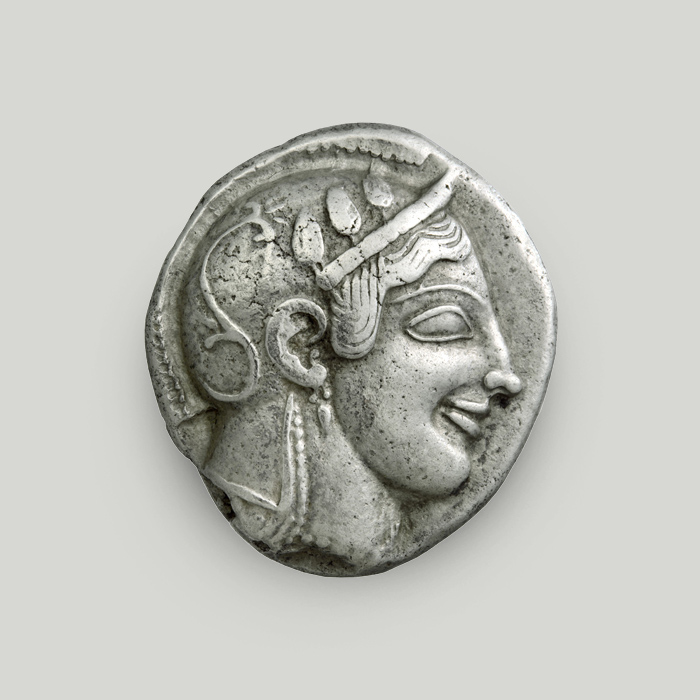500 drachma banknote, 1932
The Bank of Greece was established in 1927 and commenced operations on 15 May 1928. By 1933, the new bank had put in circulation the entire stock of National Bank notes with the imprint “BANK OF GREECE” (in Greek) in red. The first Bank of Greece banknotes were printed in 1932 in denominations of 500 and 5,000 drachmas and circulated in 1933. Greek painter Michael Axelos designed the 500-drachma banknote.
Face
Centre: a bust of the goddess Athena. Identifiers and symbols on the rest of the surface.
Back
Bull capture. The scene was originally part of the decoration on the famous Mycenaean golden cup excavated in Vafeio, Sparta. Identifiers include the denomination numeral, the bank’s name and the issue in words.
The need for a central bank
Until 1927, the National Bank had the right to issue banknotes. It exercised this right alongside its commercial activities.
However, a relevant expert committee appointed by the League of Nations (the predecessor of the UN) pointed out the issues arising from the National Bank’s dual capacity as a commercial bank and a currency issuer.
In the context of boosting the country’s economy, the committee decided that a new central bank with no political affiliations should be established. The new bank would have exclusive currency issuing rights.
The Bank of Greece
The Bank of Greece was established in 1927. It was the country’s central bank and exclusive currency issuer.
It commenced its operations on 15 May 1928. Alexandros Diomidis was appointed its first Governor.
The Bank of Greece exercised its issuing rights for 73 years. When the euro was established as the common EU currency, the Bank assigned these rights to the European Central Bank.
Replacing the existing notes
The Bank of Greece did not issue its own banknotes immediately upon establishment. There was still a large stock of banknotes issued by the National Bank over the 1923-1927 period.
This stock was gradually put in circulation from 1928 to 1933. The notes bore the imprint “BANK OF GREECE” on the face, in red, in an arched design.
The first Bank of Greece banknotes were printed in 1932 by the American Bank Note Company in New York. They circulated in 2 denominations – 500 and 5,000 drachmas – in 1933.
Artwork by prominent painters
The art on the first Bank of Greece notes was created by Greek artists.
Michael Axelos did the artwork for the 500-drachma banknote. The bust of the goddess Athena at the centre of the banknote later inspired the Bank of Greece logo.
Axelos was the first Greek artist ever to take on the design of banknotes. He had also worked on banknotes for the National Bank of Greece. Some of his disciples, including very important artists like engraver Giannis Kefallinos and sculptor Vasos Falireas, continued his work in the following years.
The golden cup of Vafeio
The scene on the back of the banknote was originally part of the decoration on a golden cup discovered in Vafeio, Sparta. This masterpiece of Minoan-Mycenaean metalwork is a typical example of early Mycenaean art (16th-15th century BCE).
The elaborate decoration depicts an effort to capture several bulls. One of the bulls is trapped in the nets, another is attacking 2 of the hunters, while the third seems to be escaping capture.
The cup is on display at the National Archaeological Museum in Athens.
The banknote in our publications
The banknote is mentioned in the book Greek Banknotes. Historical Evidence by Dr Dimitra Tsangari. The publication includes the paper money put in circulation throughout the history of the newly-established Greek state: banknotes, coin notes and relevant material. It spans over 180 years of history. A timeline presents key moments in Greek history that were linked to currency circulation.
Buy the publication Greek Banknotes. Historical Evidence on the Alpha Bank e-shop.
The 500-drachma banknote of 1932 is on display at the Banknote Museum of the Ionian Bank in Corfu, managed by Alpha Bank.
The exhibit is open to the general public. View the Museum opening hours.


